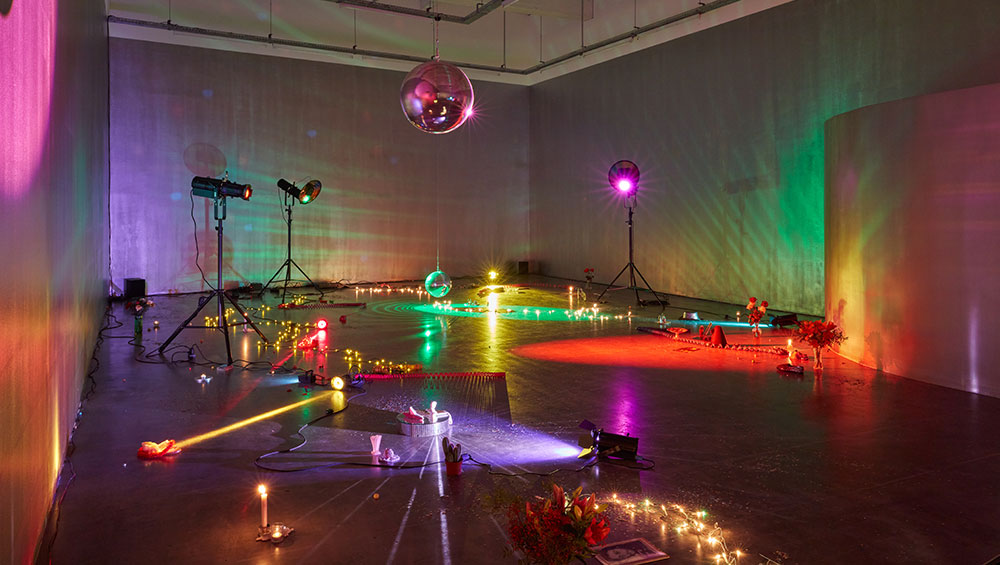
Marc Camille Chaimowicz: Nuit américaine, installation view, Wiels, Brussels, 2023. Photo: We Document Art.
Wiels, Brussels
17 February – 13 August 2023
by JOE LLOYD
We are at a party. Or perhaps its aftermath. There is no one around. A disco ball hangs from the ceiling and, struck by coloured lights, projects flecks across the walls. The same lights produce glowing puddles on the floor, in and around which are housed dozens of objects. There are several cameras, many flower vases and burning candles. A Pierrot hat and a fox mask are bathed in red light. A miniature bicycle stands nearby. A scattering of images include pictures of John Lennon, Vladimir Lenin and Marilyn Monroe, as imagined by Andy Warhol. Janis Joplin, the Doors and the Rolling Stones play on the stereo. It is as if everyone left the party sometime around 1970 but it kept going.
This is Celebration? Realife Revisited (1972-2000), an installation by the London-based artist Marc Camille Chaimowicz (b1947). It was first exhibited at the Ikon Gallery, Birmingham in 1972, before being packed in boxes under the artist’s bed for decades. It currently forms the first section of Nuit Américaine, Chaimowicz’s retrospective in three works at Wiels, Brussels’ Centre for Contemporary Art. The nuit américaine is a cinematic technique in which black backgrounds and interior lights are deployed to create the illusion of shooting at nighttime. Here, it becomes a metaphor for seeing life through the lens of art.
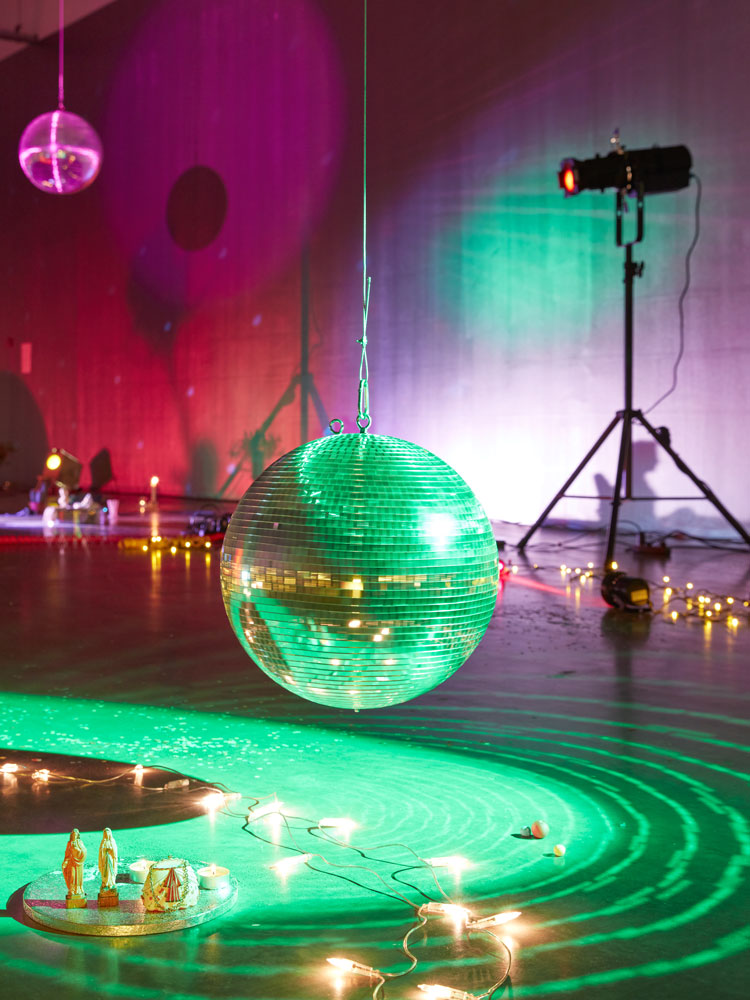
Marc Camille Chaimowicz: Nuit américaine, installation view, Wiels, Brussels, 2023. Photo: We Document Art.
Chaimowicz has been blurring life and art for decades. His own identity is itself a blur. He was born in postwar Paris to a French mother and a Polish Jewish father. His family moved to Britain when he was eight, and he has lived in London ever since. He started off studying painting at the Slade, but he had a Damascene moment after travelling to Paris to take part in the May 1968 student protests. On his return, he burned all his paintings and began again, embarking on a trailblazing artistic project that has grown to encompass performance, installation and the decorative arts.
Celebration? Realife Revisited was one of the first results. It has an elegiac quality, as if a monument to the revolutionary optimism of the 60s from the vantage of the less starry-eyed decade that would follow. Few things are sadder than a glitter ball spinning in an empty room (except perhaps a glitter ball not spinning, which also features in Chaimowicz’s scattering). But there is also a real sense of celebration for the newfound freedom, the sense of possibility, the music; question mark be damned. The curator has the responsibility of ensuring the installation contains fresh flowers, keeping it alive.
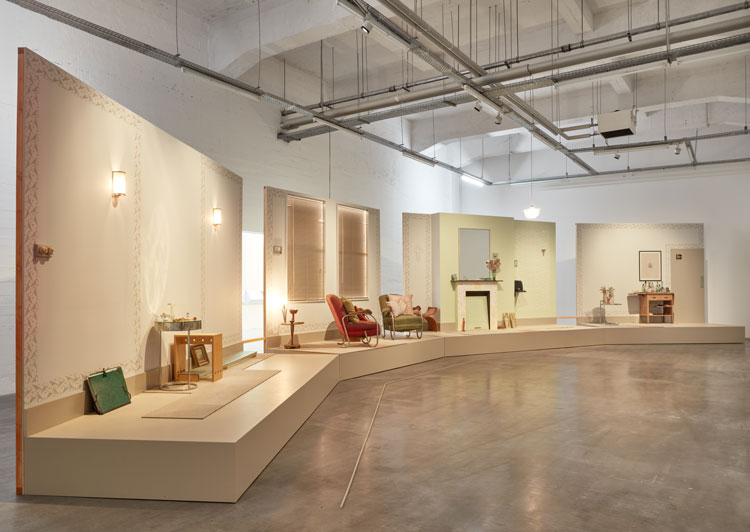
Marc Camille Chaimowicz: Nuit américaine, installation view, Wiels, Brussels, 2023. Photo: We Document Art.
When Chaimowicz first exhibited the work, he would talk to visitors and hand out cups of tea, as if inviting them into his home. The importance of domestic spaces as places of hospitality is a theme throughout his work. It is especially prominent in the second large-scale installation on display at Wiels, The Hayes Court Sitting Room (1979-2023). Late last year, Chaimowicz left his flat in a mansion block in Camberwell, south-east London, after more than 40 years. His sitting room was dismantled, packed up and shipped in pieces to Wiels, where it has been installed, walls and all. The four sides of the room now stand in an arced sequence, slightly raised above the ground like stage sets waiting for the actors to arrive.
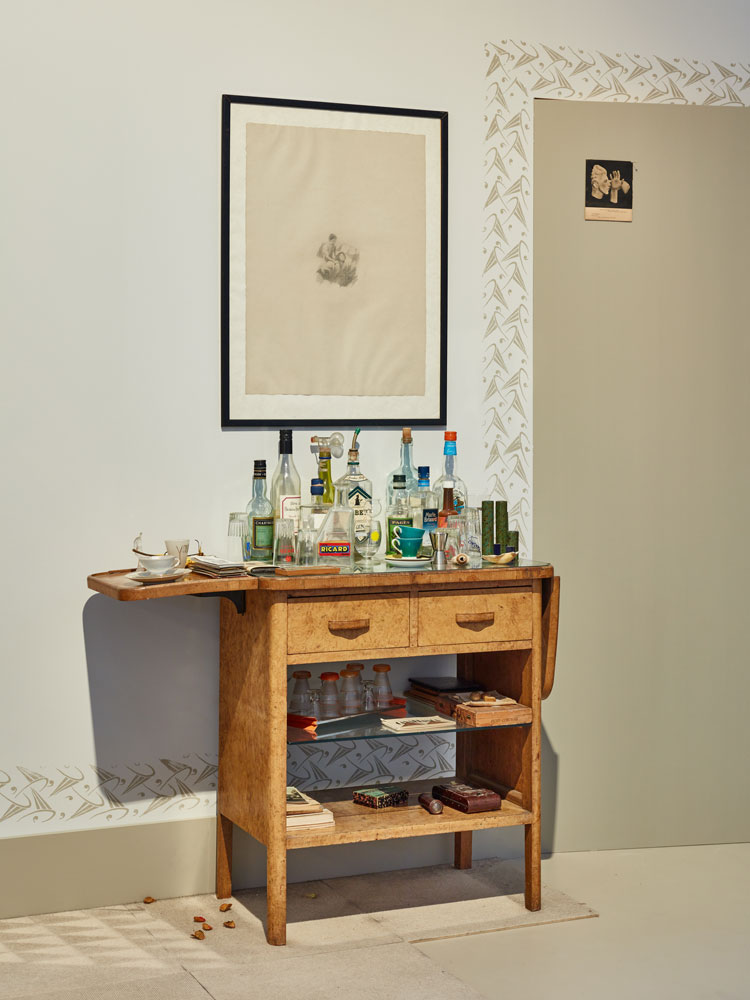
Marc Camille Chaimowicz: Nuit américaine, installation view, Wiels, Brussels, 2023. Photo: We Document Art.
Chaimowicz conceived his sitting room as a place for entertaining, his own Parisian salon. It is an extension of his life, a place where memories have been formed and forgotten. Chaimowicz printed some of the walls with abstract patterns, so-called poor man’s wallpaper. The room contains an unruly procession of sentimental objects, artworks and furniture, the result of years of collection. A volume of Camus sits on a coffee table. Among the bibelots is a tiny model snake trapped inside a glass pyramid. There is a drinks cabinet with vintage liquor bottles, their contents emptied for transit to Brussels. One vase contains a cutout photo of leaves, because the live plants were too fragile to travel.
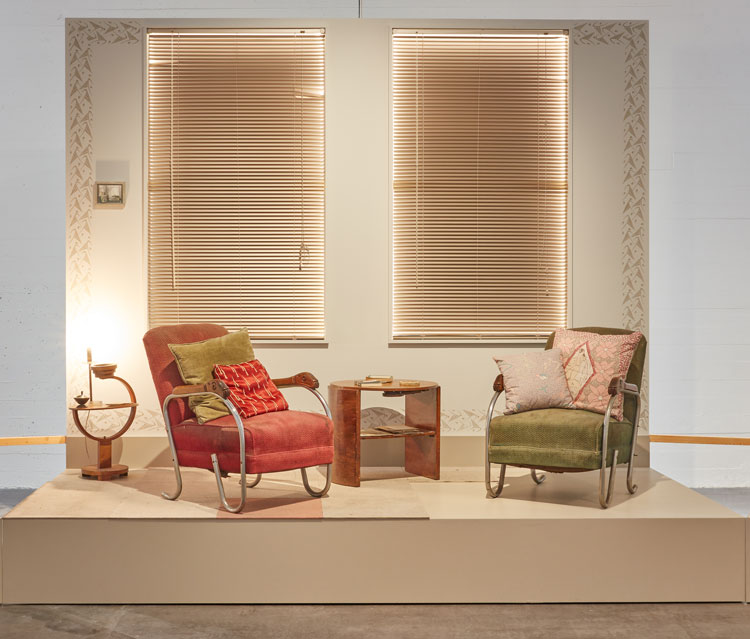
Marc Camille Chaimowicz: Nuit américaine, installation view, Wiels, Brussels, 2023. Photo: We Document Art.
The room was well-lived in: we see the signs of wear. The armchairs are frayed, the carpet panels flecked with tears and marks. And it was continuously changing, never finished. A glass shelf sits mysteriously on the floor, as if the occasion were never found to affix it to the wall. For the exhibition, Chaimowicz painted the fireplace with flowers, leaves and nude forms, a gesture redolent of the Bloomsbury Group’s fusion of art and life at Charleston. But while Charleston evokes a collective endeavour, here we are very much in the presence of a single host. Chaimowicz exists in every item, from the drawing above the mantelpiece to the volume of Camus on the table. It is an astonishingly intimate self-portrait, without a single visual representation of Chaimowicz himself. One leaves the room feeling one knows him, without being able to pin down who it is one knows.
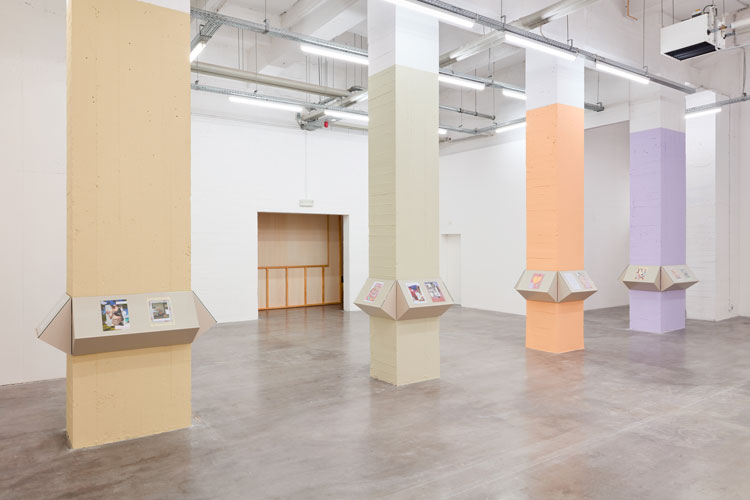
Marc Camille Chaimowicz: Nuit américaine, installation view, Wiels, Brussels, 2023. Photo: We Document Art.
The final work in the exhibition also constitutes a form of veiled self-portrait. It comprises 40 collages produced since December 2020, which Chaimowicz sent to Wiels’ senior curator, Zoë Gray, every fortnight (each begins “Dear Zoë”, lending the series an epistolary aspect). They are now displayed on lecterns attached to pastel-coloured columns. The series takes as its starting point Gustave Flaubert’s Madame Bovary (1856), the tale of a character who seeks to escape her provincial bourgeois life through literature, luxury and ill-fated love affairs.
The series begins by listing phases in Emma Bovary’s life: “Emma clandestine”, “Emma in reverie”, “Emma in despair”. Many of these phrases recur throughout the work and become prompts for the visual contents of the collages. Chaimowicz creates airy fantasias on luxury goods, created through cannibalising fashion magazines. Many of these pieces have ribbon-like lines and curls, another allusion to the decorative arts. There is an element of camp in this distanced craving for jewelled trinkets and haute couture, and the contrast between the glittering world the artworks present and their relatively low status as collages. Chaimowicz’s works are not explicitly queer, but they casually dismiss restrictive gender roles.
The tone is often playful, as with a piece that uses a photograph of Isabelle Huppert to remake Man Ray’s profane Homage to DAF de Sade (1933) and another that makes a pair of chicken breasts resemble the leaves of a flower. There is melancholy too. Emma becomes a conduit through which to express the frustrations of lockdown: the longing for glamour, contact, Italy. Towards the end of the novel, Emma’s husband, Charles, sells their possessions. Two of the collages parallel this. They show a room in Chaimowicz’s flat. One collage has the room filled with furniture and objets d’art, marked up to be requestioned, reclaimed, returned, auctioned, sold and sequestered by the bailiff. The other depicts the empty space that remains once these have all gone, denuded of the traces of the life that lived within, a work of art for ever lost.